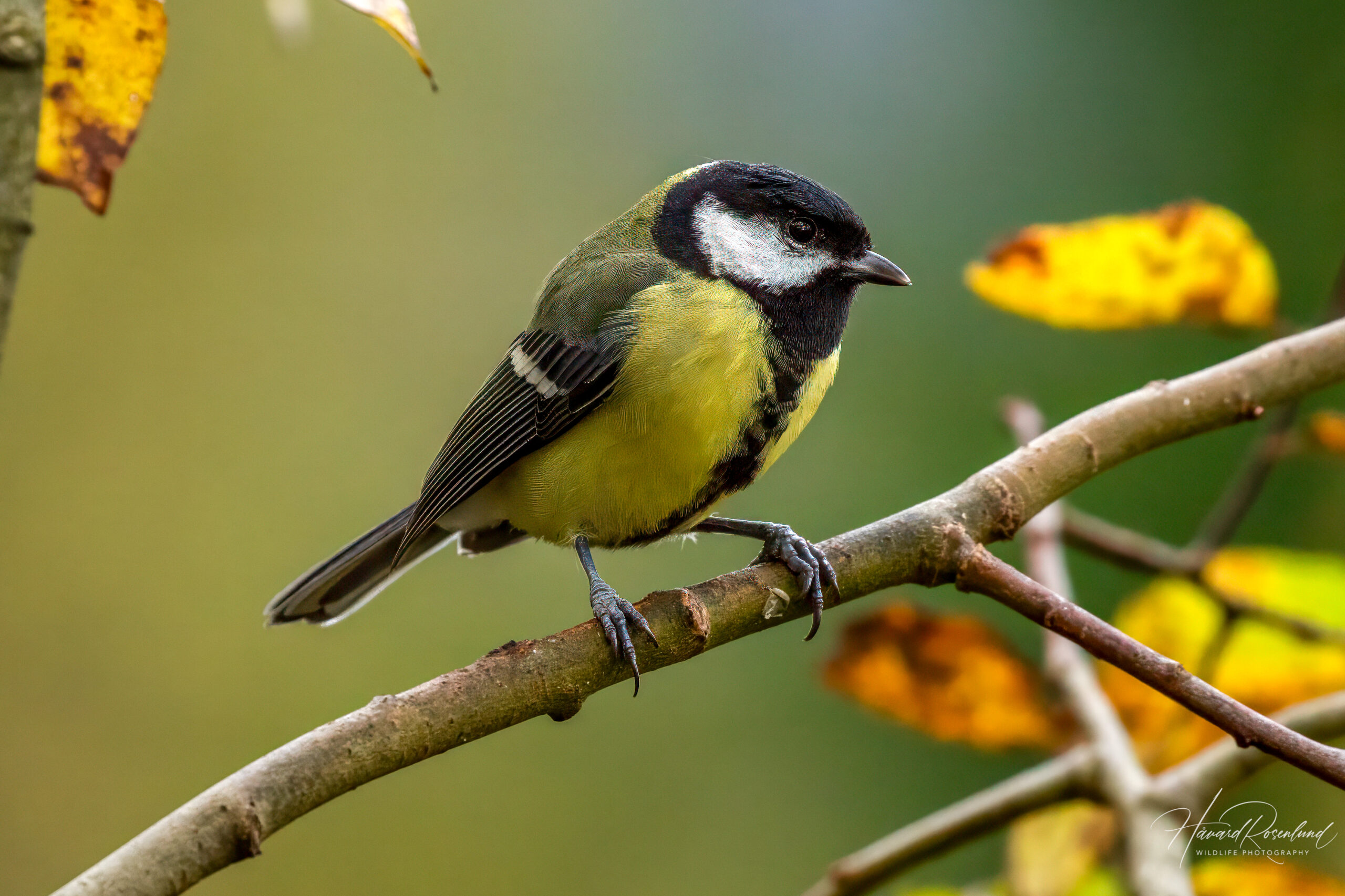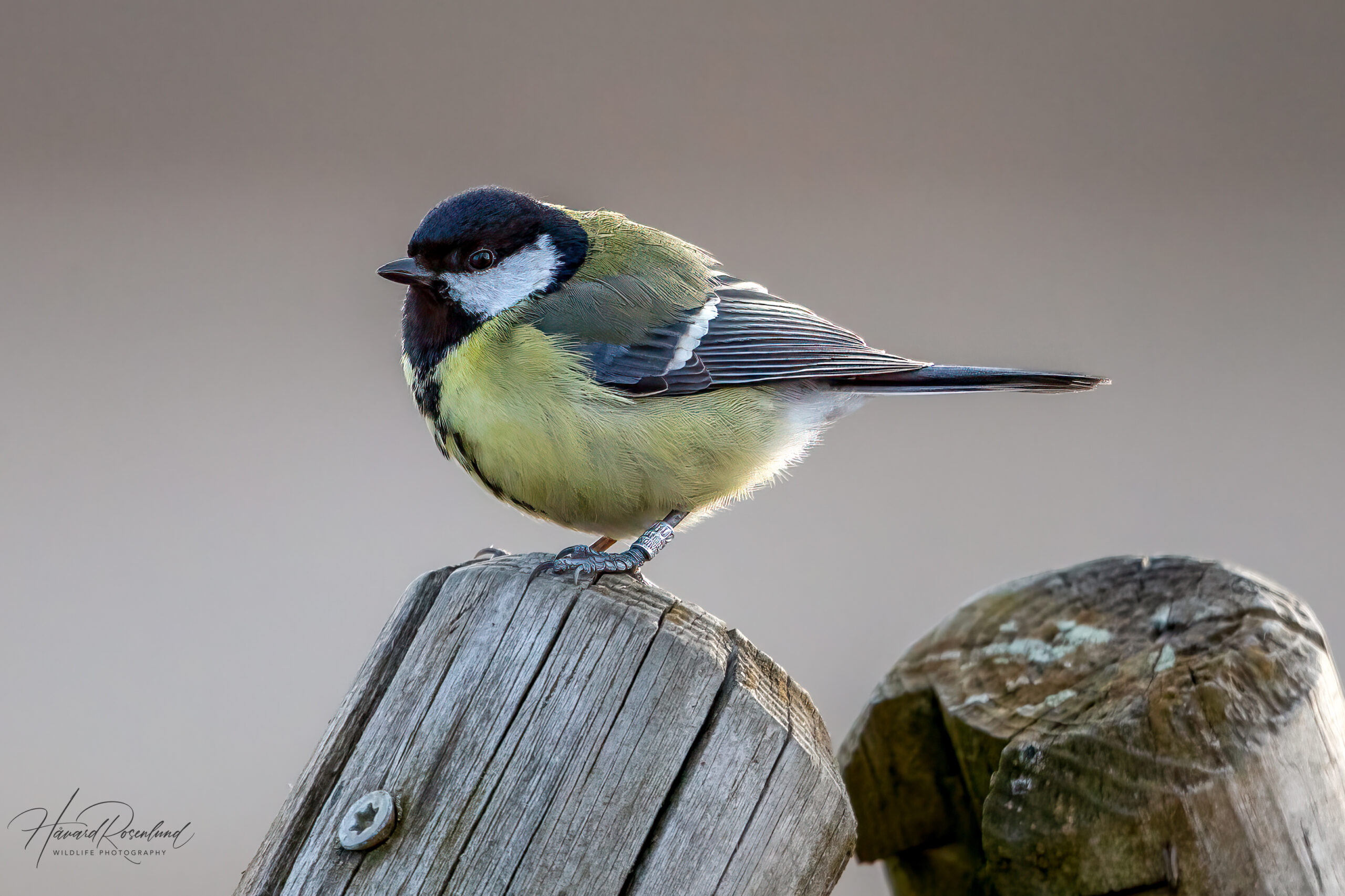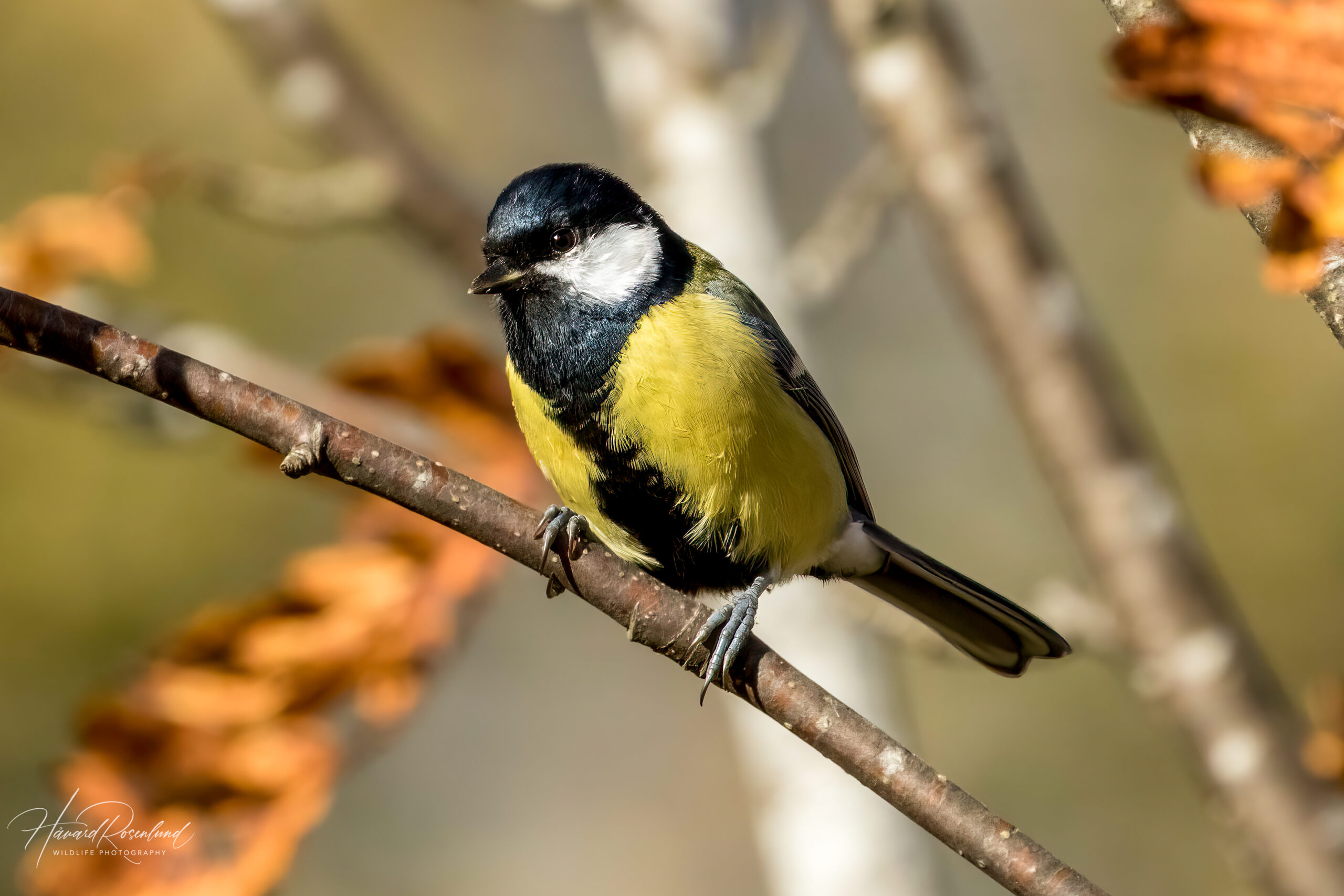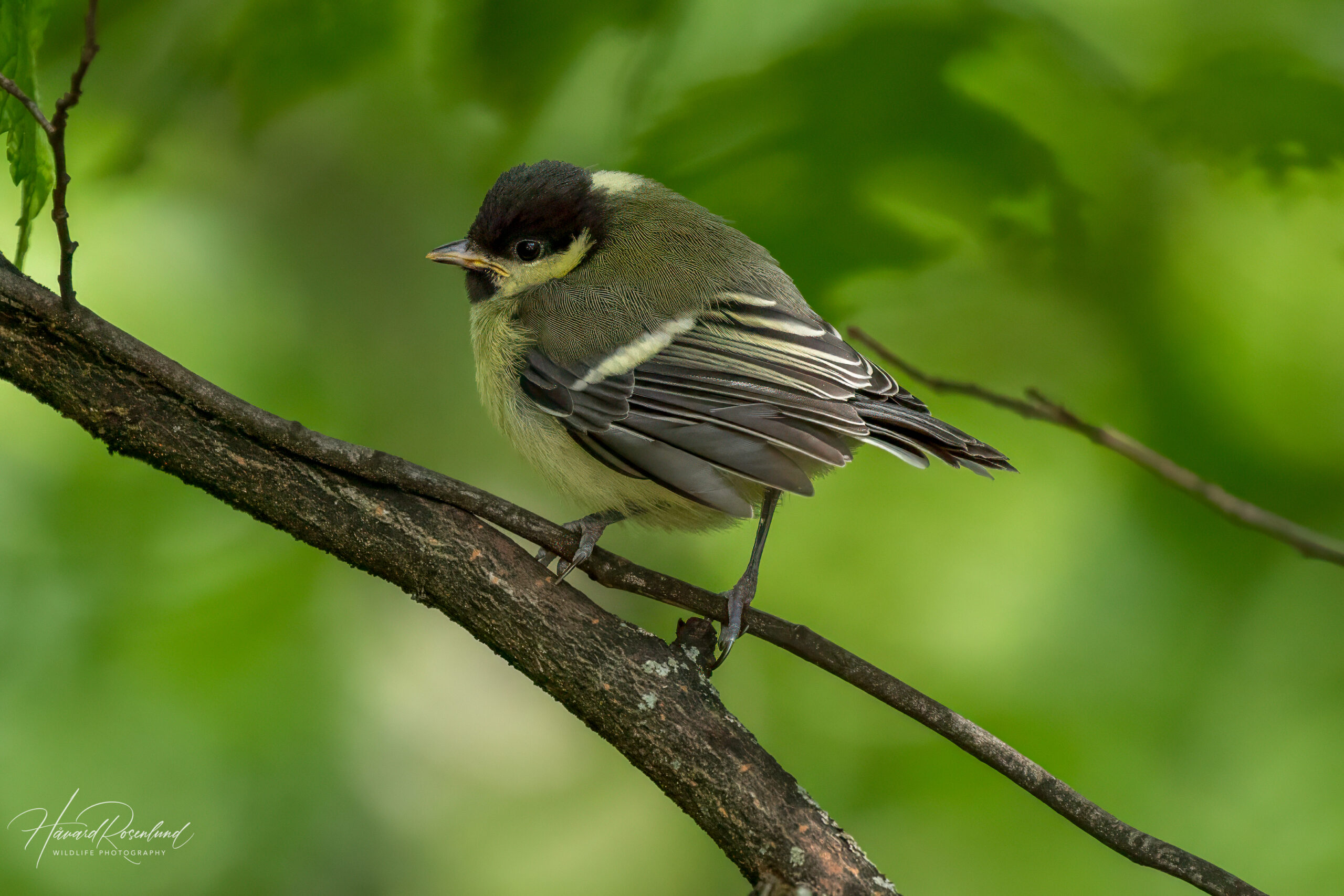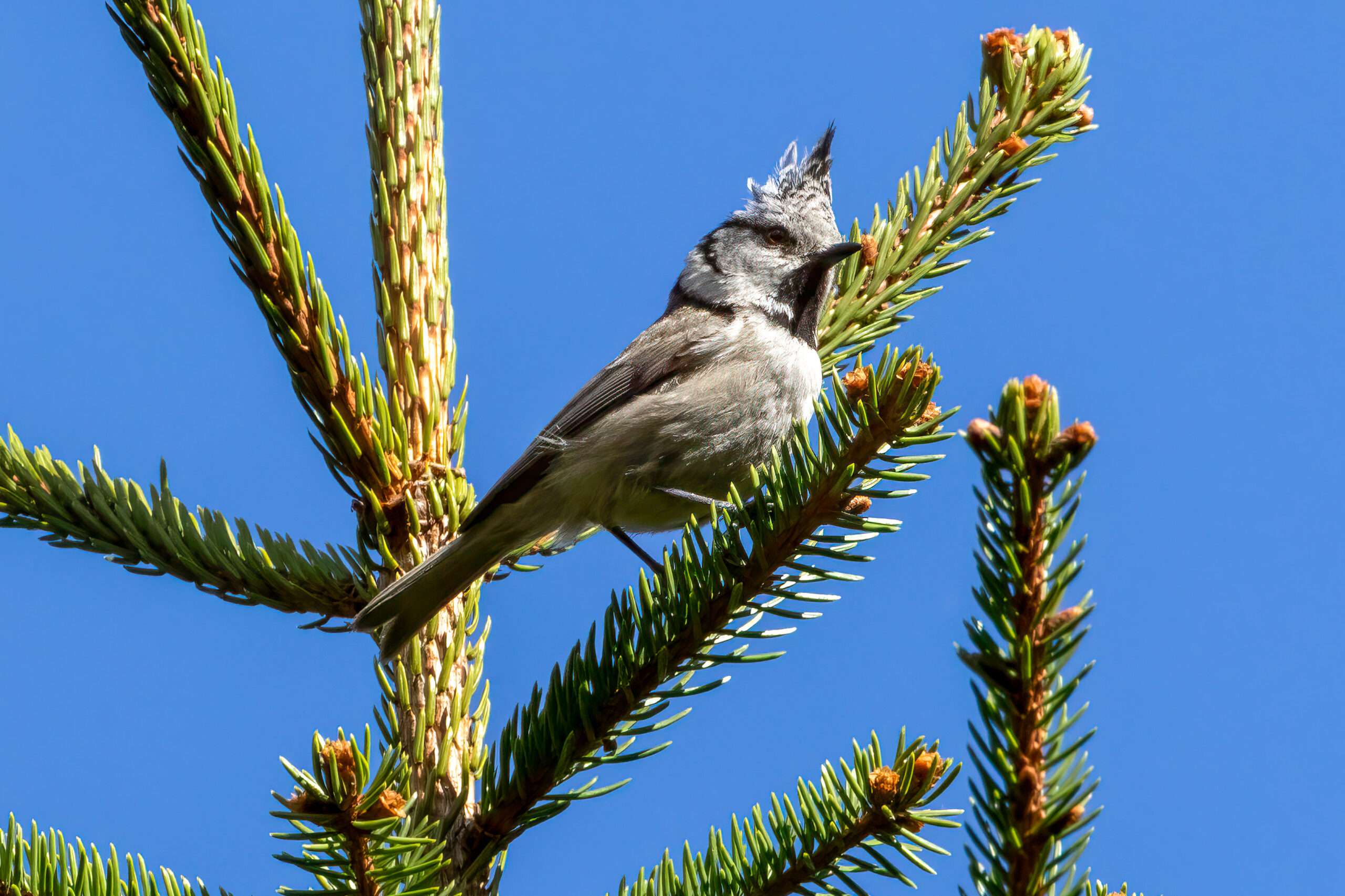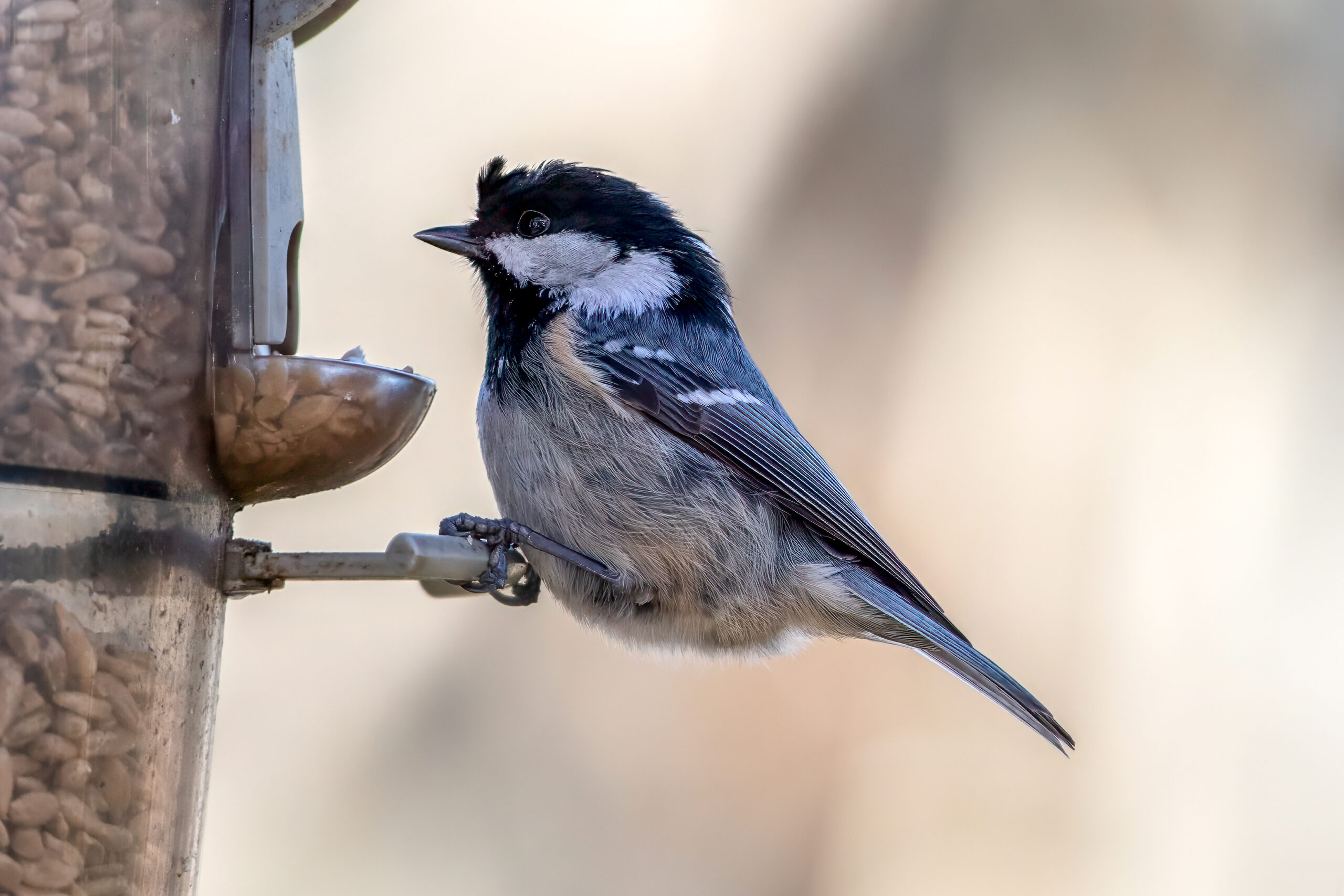Description
The great tit (Parus major) is one of the largest species of tit, with a widespread presence throughout Europe, the Middle East, Central Asia, and parts of North Africa. It is easily recognizable by its vibrant yellow belly with a central black stripe, greenish back, and a distinctive black head with white cheeks. Adult great tits typically measure 12.5 to 14 cm (4.9-5.5 in) in length with a wingspan of 22 to 25 cm (8.7-9.8 in). This bird can be differentiated from similar species, like the coal tit (Periparus ater), by its larger size, the central black stripe, and yellow belly. Recent DNA studies have led to the division of what was once a single species into the great tit, the cinereous tit (Parus cinereus) of southern Asia, and the Japanese tit (Parus minor) of East Asia.
Diet & habitat
Great tits inhabit open deciduous woodlands, mixed forests, forest edges, gardens, parks, and, in North Africa, oak forests and palm groves. The species shows remarkable adaptability, thriving in both rural and urban settings, which has contributed to their widespread presence across their range. Great tits have a varied diet, primarily insectivorous in summer, expanding to seeds and nuts in winter and are a common sight on bird feeders. They are intelligent birds, and are known to use tools to extract food items. During harsh winters they have even been known to kill and prey upon small hibernating bats.
Nesting
The breeding season for great tits begins in early spring. They are cavity nesters, utilizing natural tree holes or nest boxes provided by humans. Females lay between 5 to 12 eggs per clutch, which are incubated solely by the female for about 13 to 14 days. The chicks are altricial, meaning they are born blind and featherless, and require intensive care from both parents. Fledging occurs roughly 18 to 21 days post-hatching, after which the young birds gradually learn to feed themselves. Great tits are known for their single brood per season, although in regions with abundant food resources, they may produce two broods. Research has shown that great tits can adjust their breeding time in response to climate change, ensuring that their chicks hatch when food is most abundant.
Status
The great tit has an extremely large range, an increasing population trend, and vast population size, estimated between 430 million to 710 million mature individuals. Despite facing challenges from habitat changes and climate fluctuations, their adaptability has enabled them to maintain robust populations. The species is listed as least concern on the IUCN Red List.




